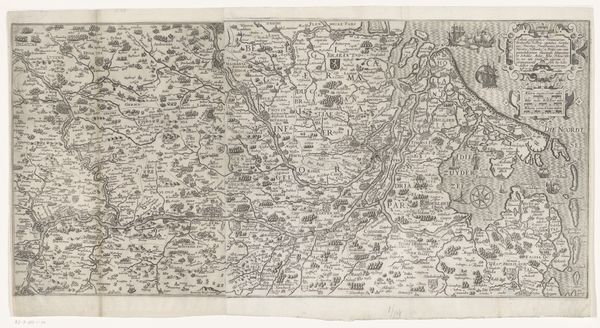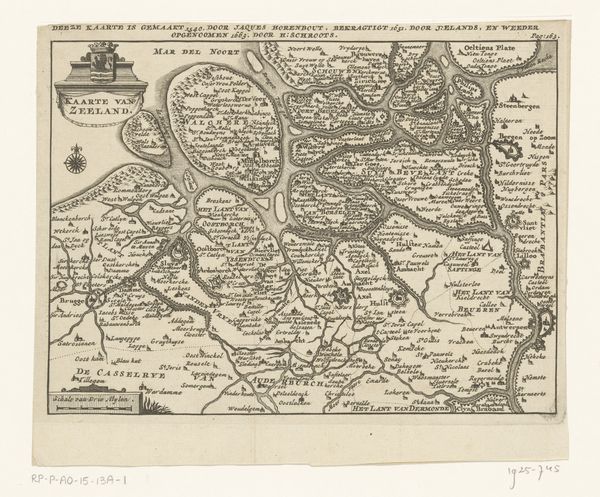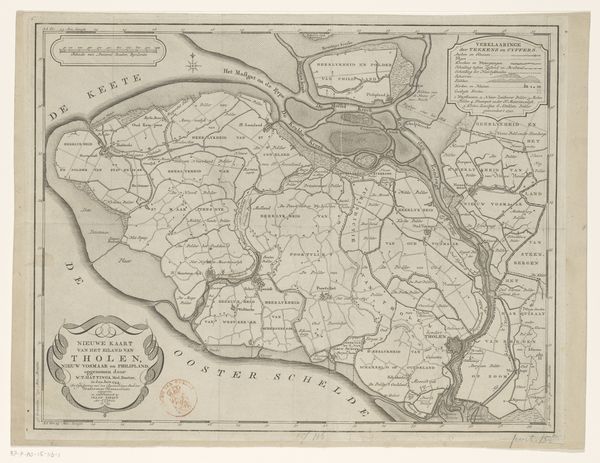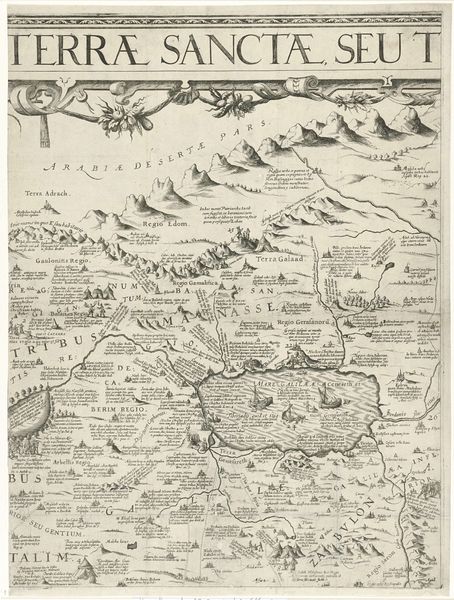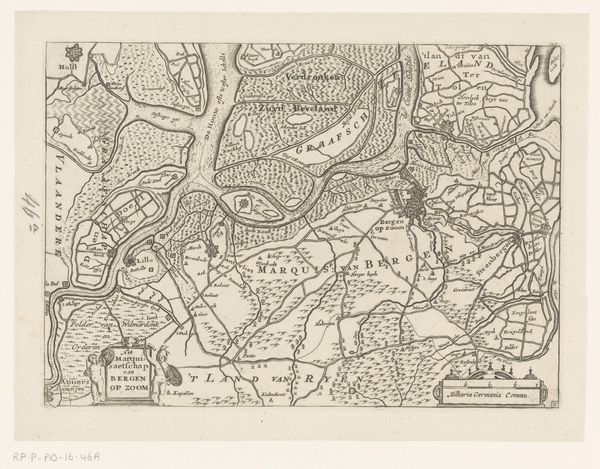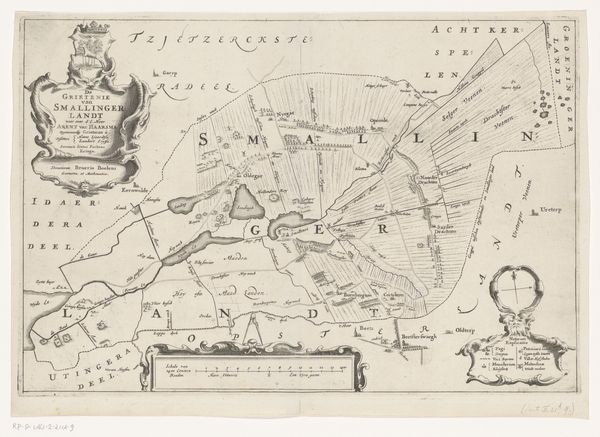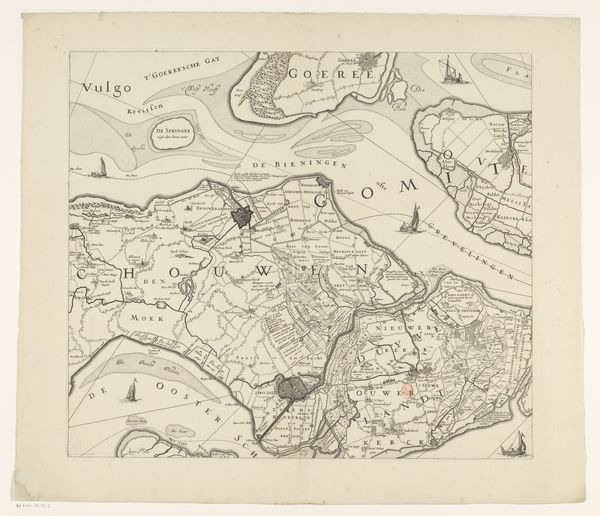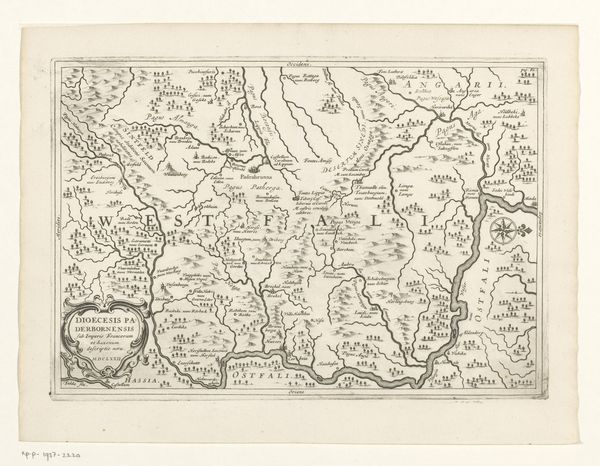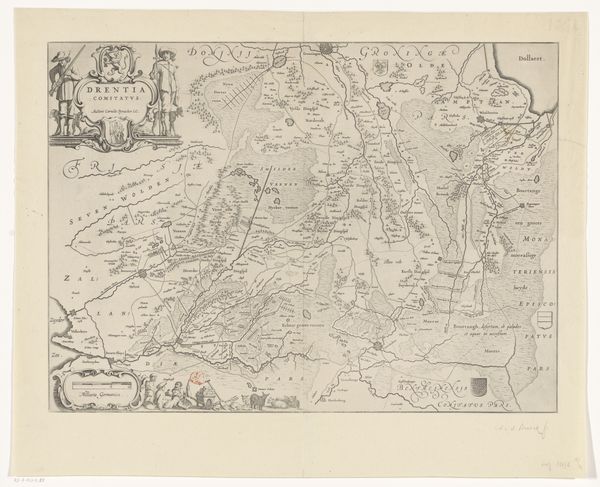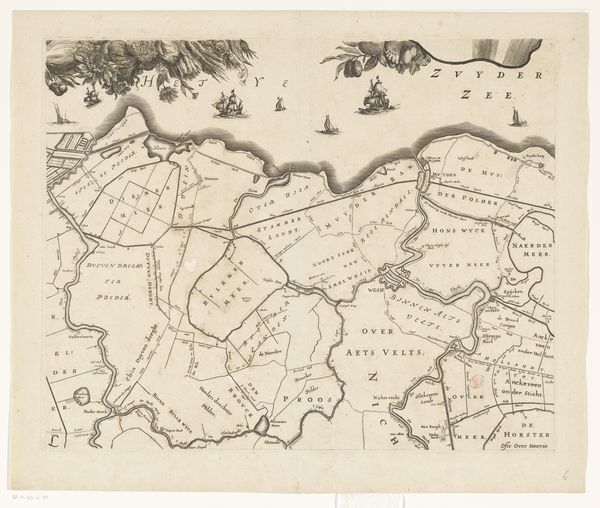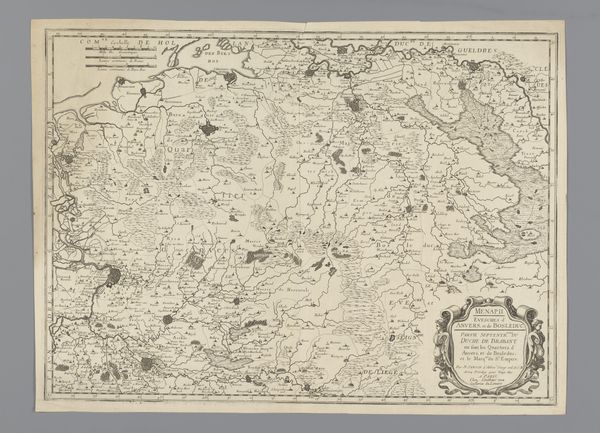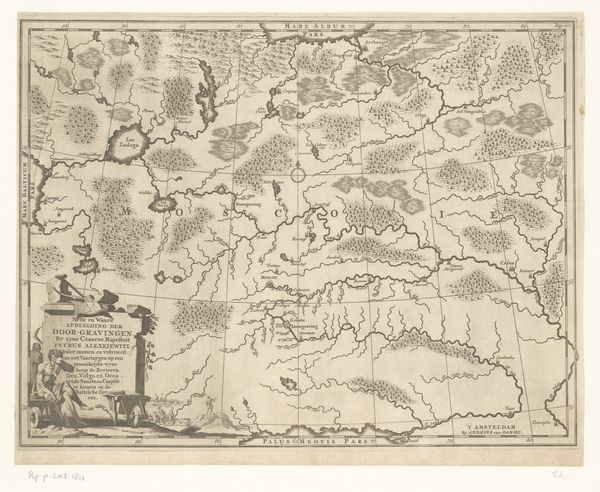
drawing, graphic-art, print, ink, engraving
#
drawing
#
graphic-art
#
narrative-art
# print
#
old engraving style
#
mannerism
#
ink
#
geometric
#
engraving
Dimensions: height 266 mm, width 394 mm
Copyright: Rijks Museum: Open Domain
Curator: This fascinating engraving, "Tree with Thomas Aquinas" from around 1590, resides here at the Rijksmuseum. It presents a complex, branching diagram filled with text within circular forms. My first impression is the sheer density of information, organized in a surprisingly organic way despite the geometric forms. Editor: It's remarkably unsettling, visually. Like some sort of highly structured nervous system laid bare, with knowledge standing in for neurons firing. Tell me, what sociopolitical climate allows for the intellectual architecture of scholasticism to take this bizarrely corporeal, systematized form? Curator: That’s astute. We're dealing with late Mannerism here, and a period rife with religious and intellectual tensions. Think of the Counter-Reformation; theological arguments were not just abstract exercises, they carried real political and social weight. Representing Aquinas, a towering figure of the Catholic Church, in this way visualized the entirety of his doctrine in relation to scripture. It also reflects how authorities, be they academic, ecclesial, or familial, dictated acceptable paths of inquiry. Editor: The way all "knowledge" is literally connected—forcibly joined, one could argue—visually argues for a stifling intellectual conformity. The text itself appears to be in Latin. Given the cultural elitism embedded within that language, how do you see this artwork engaging with its public? Curator: It would have been destined for an educated, Latin-literate elite, for whom this sort of visual encyclopedia was quite the fashionable conceit. While the masses remained disenfranchised from the direct engagement with scholarship, such artifacts would trickle down by other means: the pulpit, teaching, and popular pamphlets to which learned authorities lent their influence. Editor: I find the visual language here deliberately exclusionary, but powerful precisely because of its opacity. Considering this work, one is reminded how even 'neutral' systems of knowledge production are ultimately shaped by—and, in turn, actively shape—the power dynamics of their time. Curator: Precisely. It’s a potent reminder to critically examine the roots and contexts that structure seemingly objective systems. Editor: Yes, it reminds us that these beautiful systems aren't simply objective blueprints; they carry their own inherent biases and limitations.
Comments
No comments
Be the first to comment and join the conversation on the ultimate creative platform.
